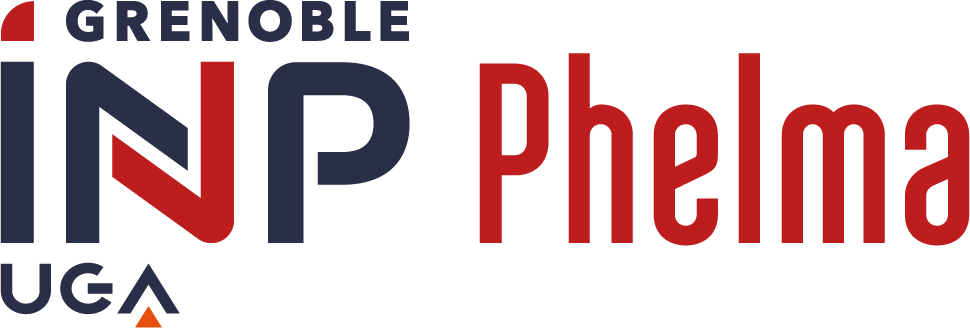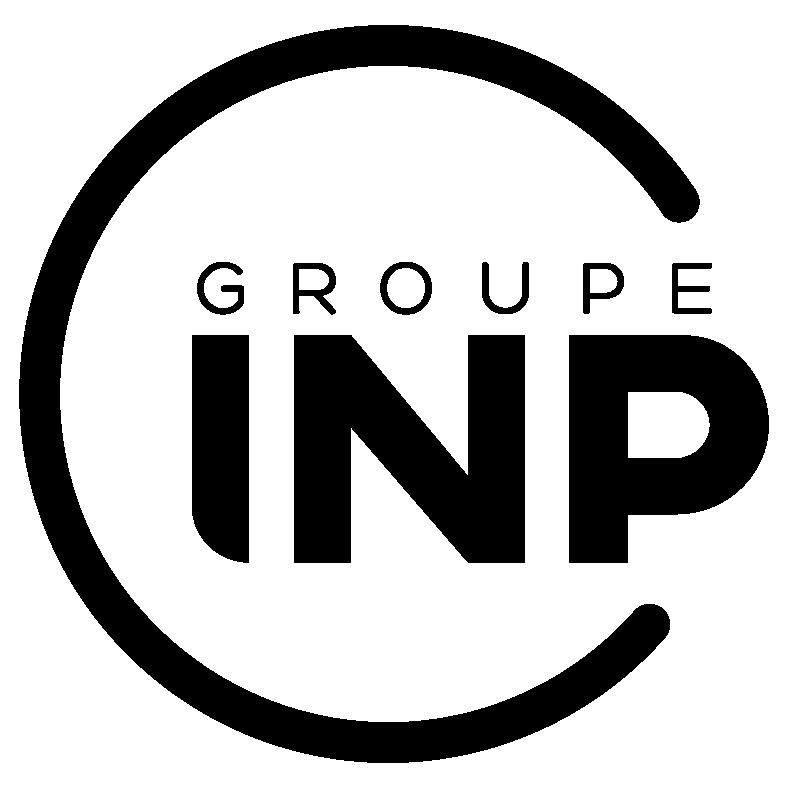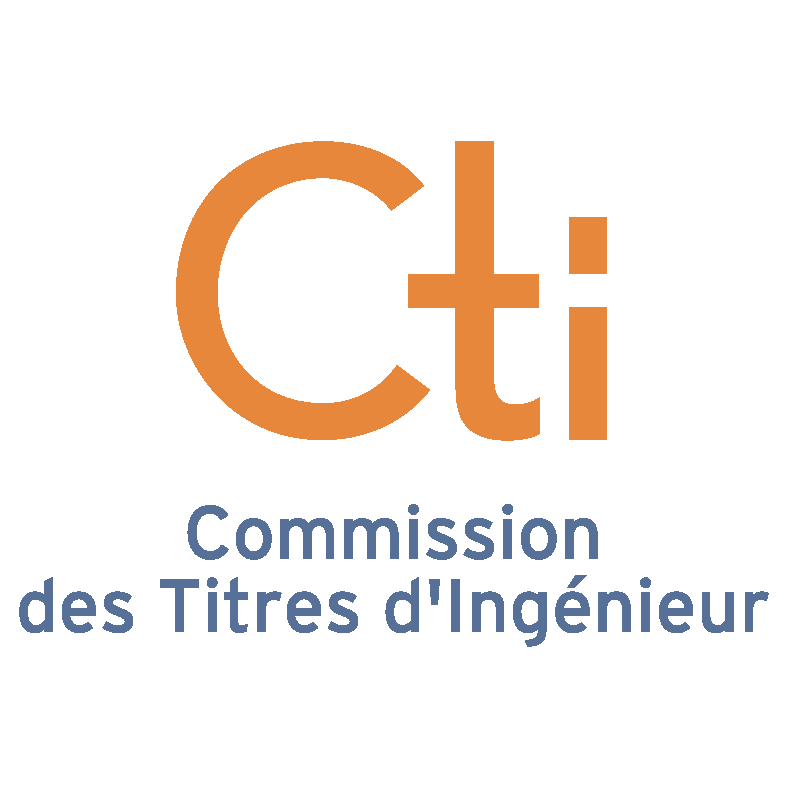FAQ - Themes
Themes
An engineer’s role is to solve concrete and complex technical and technological problems.
Their skills are based on:
- scientific and technical knowledge,
- economic, social and human knowledge,
- combined with sound general knowledge
Engineers can hold very varied posts with numerous responsibilities
- directly, for design, implementation, sale, manufacture or after-sales services
- in support, of control, expertise or management
- for progress, of research, development, definition of standards
- to pass on knowledge, training, take part in conferences and seminars
Gross annual salary – net monthly (2019 figures)
- Start of career: €35,000
- End of career: €107,000
Grenoble INP – Phelma offers these subjects for various scientific and industrial fields: micro/nanoelectronics, photonics, nanoscience, materials and health etc.
Electronic components, micro- or multiprocessors, memory and storage of information, Big Data…
for domestic uses or for the defence, medical, space or aeronautics industries.
- Smartphones, tablets, video games, augmented reality
microsensors for the car, aerospace and defence industries - Telecommunications 4G-5G, Wi-Fi, RFID etc.) or wired such as optical fibre
- Internet of Things to enable everyday objects, as well as their users, to communicate with each other
- Embedded electronic systems (EMBEDDED ELECTRONIC SYSTEMS (SEI)),
- Nanotech international course,
- Engineering physics for photonics and microelectronics (ENGINEERING PHYSICS FOR PHOTONICS AND MICROELECTRONICS (IPHY))
- Microelectronics & Telecommunications (MT)
- Micro lasers (miniature lasers) used in certain sensors (e.g. CO2 sensor installed in certain cars) or for transmission by optical fibre or playing CDs/DVDs/Blu-rays,
- Memory or flash memory (e.g.
- memory card),
Optical components, sensors for mobile phone cameras.
Engineering physics for photonics and microelectronics (IPHY)
Materials science and engineering (SIM), Advanced Materials (AM) and the international courses FUNCTIONALIZED ADVANCED MATERIALS AND ENGINEERING (FAME+) and ADVANCED MATERIALS FOR INNOVATION AND SUSTAINABILITY (AMIS)
Medical imaging, nanomedicine, nanorobots, in vitro diagnosis or lab-on-a-chip, tissue engineering, implantable devices, brain-computer interface, e-medicine or computer-aided medicine or robotic assistance
The Biomedical Engineering (BIOMED)ical Engineering course
Depending on the engineering course taken, students learn to master nuclear energy, a certain number of renewable or alternative energy sources, storage and release of energy (photovoltaic, fuel cells and hydrogen fuel cells, batteries and electrochemical batteries).
Nuclear energy remains essential today. It is a complex and fascinating scientific field as it involves many areas of physics interacting.
Phelma engineers therefore design the new energy technologies while improving the efficiency and safety of existing facilities;
- Optimisation of the operation of existing facilities
- Continuous improvement of safety and industrial risk control
- Development of new nuclear fuels,
- Next generation of safer and more efficient reactors
- Reprocessing of waste,
- Fundamental and applied research in nuclear physics.
The energy and nuclear engineering course (ENERGY AND NUCLEAR ENGINEERING (GEN)) course provides mastery of power generation systems, with specialisation in nuclear energy, including the tools for modelling and simulation of the processes coupled at the heart of such systems, and tools for analysis of safety. With 40 years’ experience, Grenoble INP – Phelma is a leading school recognised by all industrial players in the field.
As well as:
- Electrochemistry and processes for energy and the environment (EPEE) for the treatment of nuclear waste
- Materials science and engineering (SIM): the design of nuclear fuel or construction of safer and more efficient power stations, based on new concepts, requires the development of materials that do not yet exist.
Phelma also trains its students in technologies dedicated to new energy sources, from photovoltaics on the roofs of our houses or in solar power plants, to the fuel cells that power our vehicles, and new higher-capacity and longer-life batteries for our touchscreen tablets.
Materials science and engineering (SIM) to develop new materials and processes to produce cheaper and more efficient photovoltaic cells.
ENGINEERING PHYSICS FOR PHOTONICS AND MICROELECTRONICS (IPHY), Nanotech
Generating power is all very well, but you must be able to store it! Here we learn about traditional batteries and accumulators for smartphones and tablets, as well as hydrogen fuel cells, lithium batteries and ultracapacitors. The functioning of all of these (electrochemical) generators is based on electro- and physicochemical processes and on control of the microstructure of the materials. Phelma engineers learn to determine the methods of functioning and failure of these systems, in order to enhance their performance, durability and safety and reduce their environmental impact, in particular via ecodesign and recycling approaches.
The electrochemistry and processes for energy and the environment (EPEE) course is unique in Europe, at the junction between physics and chemistry, and is the specific Phelma course dedicated to these fields. It covers a very wide range of applications, all of which benefit from the unique performance of physicochemical and electrochemical processes.
Depending on the engineering course taken, students learn to master digital technology, artificial intelligence, image and signal processing, machine learning or deep learning, telecommunications, IT and networks, embedded software and the Internet of Things
The SIGNALS, IMAGES, COMMUNICATIONS, MULTIMEDIA (SICOM) – JOINT COURSE WITH GRENOBLE INP – ENSE3 and BIOMEDICAL ENGINEERING (BIOMED) include lessons in the field of artificial intelligence such as deep learning and machine learning. In these courses, Phelma engineers design data analysis solutions, from sensor to decision.
IT and networks are no longer limited to computers, but are present in almost everything we use each day: avionics, control systems for cars, smartphones, and the vast number of connected objects via the Internet of Things. These “embedded” systems include both hardware AND software. They require new communications technology (broadband, reliability, security, energy cost etc.), new network protocols and especially must reduce the carbon footprint of information systems (there were 50 billion connected objects in 2020!).
Engineers who take the EMBEDDED SYSTEMS AND CONNECTED OBJECTS (SEOC) – JOINT COURSE WITH GRENOBLE INP – ENSIMAG will be able to choose their favourite subjects in this fast-expanding field at the junction between networks, mobile apps, system on a chip and real-time and embedded IT.
Whether they are natural (signals from the sea bed or volcanoes, pictures, speech etc.) or artificially created (speech or picture synthesis, MP3, JPEG, divX, geolocation by satellite etc.) we are now surrounded by signals, pictures, digital communications and multimedia. Information technologies cover numerous industrial sectors: transport, high-tech imaging, environmental studies, aerospace, telephony, telecommunications, biomedical, leisure activities etc.
Signals, Images, Communications and Multimedia (SICOM) – JOINT COURSE WITH GRENOBLE INP – ENSE3): Five key skills make it possible to develop industrial projects in the business sectors at the junction between these subjects: signals/images/modelling, IT, data science, electronics and artificial intelligence.
Biomedical Engineering (BIOMED) which covers in particular the field of biomedical engineering and imaging (X-rays, MRI, scanners, NMR etc.)
Certain courses at Phelma offer lessons directly linked to the environment and sustainable development. The subjects covered include alternative energies, eco-processes, waste treatment, analysis of the environment and energy management and economics:
New materials and processes to produce cheaper and more efficient photovoltaic cells:
- Advanced Materials (AM) international course
- Functionalized Advanced Materials and Engineering (FAME+) course
- Advanced Materials for Innovation and Sustainability (AMIS) course
- Engineering physics for photonics and microelectronics (IPHY)
Fuel cells and new batteries to store energy: Electrochemistry and processes for energy and the environment (EPEE)
Electronics and information technology are compatible with environmental protection!
Energy efficiency, generation, supply and smart consumption of energy resources, are also challenges for the microelectronics, data processing, telecommunications and networks sectors: green electronics, but also smart electricity meters, smart grids, start-stop systems, electric vehicles etc.
Energy management for components and high-tech devices:
- Embedded electronic systems (SEI)
- Embedded systems and connected objects (SEOC) – joint course with Grenoble INP – Ensimag
Analysis of natural signals and the environment: Signals, Images, Communications, Multimedia (SICOM) – joint course with Grenoble INP – Ense3
Ecoindustry, ecodesign
Ecoindustry is an approach that aims to reduce pollution from industrial processes: ecodesign, alternative and innovative processes for treatment/reprocessing, recycling and recovery of waste. Electrochemistry and processes for energy and the environment (EPEE)





